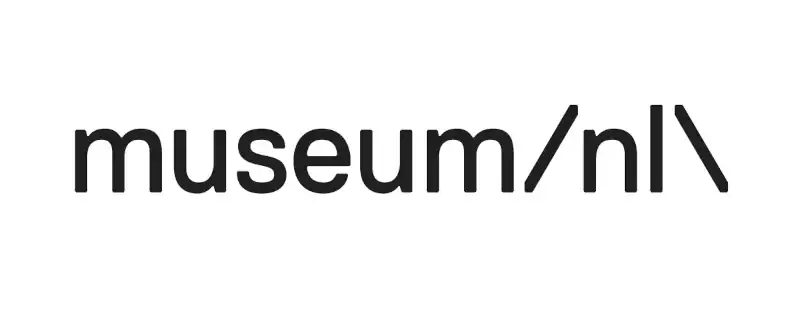Strengthening Security Measures
With traffic surges comes an increased risk of cyber threats. Securing your website is paramount to protect both your business and users. Implementing a web application firewall is a crucial step in protecting your site during high-traffic events. This section will cover essential security measures, such as protecting against DDoS attacks, implementing SSL certificates, and monitoring threats.
Protecting Against DDoS Attacks
A Distributed Denial of Service (DDoS) attack can cripple your website. These attacks flood your site with traffic, overwhelming servers. Implementing protective strategies is vital.
A web application firewall (WAF) can filter out malicious traffic. Consider using DDoS protection services, which offer real-time monitoring and mitigation.
Regularly update software and plugins to patch vulnerabilities. Staying informed about the latest threats ensures your website remains secure against DDoS attacks.
Implementing SSL Certificates
SSL certificates encrypt data between your website and users. This encryption protects sensitive information, building user trust. Search engines also favor sites with SSL, improving SEO rankings.
-
Choose a certificate type: Standard, Wildcard, or Extended Validation.
-
Purchase from a reputable provider: Ensure compatibility with your hosting environment.
-
Install and configure the certificate: Follow your web host's instructions for a seamless setup.
Regularly renew your SSL certificate to maintain security. By implementing SSL, you'll protect user data and enhance your site's credibility.
Monitoring Security Threats
Continuous monitoring of security threats is crucial. Use security plugins or services to scan for vulnerabilities. These tools can alert you to potential issues, allowing for timely intervention.
Regular audits help identify weak points in your security infrastructure. Keep track of user activity, especially login attempts, to spot suspicious behavior.
Consider setting up alerts for unusual traffic patterns. Proactive monitoring ensures swift responses to threats, safeguarding your website and users effectively.
Leveraging Content Delivery Networks
A content delivery network (CDN) distributes your site’s content across multiple servers worldwide. When users access your website, they receive content from the nearest CDN server, which improves load speeds and overall performance. This distribution enhances load speeds and reliability. The following section discusses the benefits of CDNs, choosing the right one, and integration steps.
Benefits of CDNs
CDNs offer numerous advantages for handling high traffic. By storing copies of your site across various locations, they reduce latency and improve load times.
Scalability is another key benefit. CDNs can handle large traffic volumes without compromising performance. They are specifically designed to efficiently manage high volumes of simultaneous requests, ensuring your website remains responsive even during peak periods. They also enhance security by masking your server’s IP address.
Cost savings arise from reduced bandwidth usage and lower server load. By leveraging CDNs, you can maintain a fast, efficient website during traffic surges.
Choosing the Right CDN
Selecting the right CDN involves evaluating your needs and budget. Consider factors such as geographic coverage and security features.
Compare providers based on their performance and reliability. Look for CDNs with a strong reputation and positive reviews. Ensure compatibility with your existing infrastructure.
Pricing models vary, so choose one that aligns with your traffic patterns and budget. By selecting the right CDN, you'll optimize performance and cost-effectiveness.
CDN Integration Steps
Integrating a CDN into your website involves several steps. Start by choosing a provider and setting up an account.
-
Configure your DNS settings: Point your domain to the CDN's servers.
-
Upload your content: Ensure your site files are accessible to the CDN.
-
Test performance: Verify that your site loads correctly from various locations.
Monitor your website post-integration for any issues. Adjust settings as needed to maximize performance. With proper integration, CDNs significantly enhance your site's resilience.
Content Optimization for High Traffic
Content optimization is a cornerstone of preparing your website for high traffic events. When hundreds of thousands of visitors arrive, every element on your site—from images to scripts—impacts performance. By streamlining media, optimizing code, and minimizing third-party dependencies, you can ensure your website remains fast, reliable, and ready to convert increased traffic into satisfied users and sales.
Streamlining Media and Assets
High traffic periods can put a significant load on your servers, especially if your website relies heavily on multimedia content. To keep loading times fast and performance high, start by optimizing images: compress images using tools or plugins, and switch to modern formats like WebP for better quality at smaller file sizes. Don’t forget to optimize videos and other large files by reducing resolution where possible and using efficient codecs.
Leverage browser caching to store frequently-used assets—such as images, CSS, and JavaScript—on users’ devices. This reduces the number of requests to your servers during high traffic events, lightening the load and speeding up repeat visits. By streamlining your media and assets, your website will be better equipped to handle spikes in traffic without sacrificing user experience.
Optimizing Code and Scripts
When high traffic events hit, every millisecond counts. Optimizing your website’s code and scripts is essential for maintaining top-tier website performance. Start by minifying and compressing your JavaScript and CSS files to reduce their size and speed up loading times. Use caching strategies to limit the number of requests your server must handle, and optimize database queries to prevent slowdowns under increased traffic.
Efficient code not only improves loading times but also reduces bounce rates, keeping potential customers engaged and increasing the likelihood of making sales. Regularly audit your site for unnecessary scripts or outdated code, and streamline wherever possible. By focusing on optimizing code and scripts, your website will be more resilient during high traffic events and deliver a smoother user experience.
Reducing Third-Party Dependencies
Third-party plugins and scripts can add valuable functionality, but they also introduce potential performance bottlenecks and security risks—especially during high traffic events. To improve website performance and security, minimize reliance on third-party plugins by using native WordPress functionality whenever possible. Audit your site for unnecessary plugins and remove those that aren’t essential.
Optimize database queries to reduce server load, and use caching to limit the number of requests made to your server. Fewer third-party dependencies mean fewer points of failure and a more streamlined, secure website. By reducing reliance on external plugins and scripts, your site will be better prepared to handle high traffic, maintain strong performance, and provide a safer, more reliable user experience.
Enhancing User Experience
A seamless user experience is essential for keeping visitors engaged, especially during high traffic events. When your website is optimized for performance and usability, you not only improve loading times but also increase the chances of converting traffic into loyal customers. Focusing on responsive design, optimizing images and multimedia content, and refining navigation can make a significant difference in your website’s performance and user satisfaction.
Start by implementing responsive design principles to ensure your website looks and functions perfectly on any device, from desktops to smartphones. Optimizing images and multimedia content—by compressing files and using efficient formats—helps maintain fast loading times, even when traffic is at its peak. Additionally, streamline your website’s navigation to make it intuitive and easy for users to find what they need quickly.
By prioritizing these essential elements, you’ll create a user experience that stands up to high traffic, reduces bounce rates, and encourages visitors to stay longer and engage more deeply with your content. This not only boosts your website’s performance during high traffic periods but also helps you rank higher in search engines and achieve your business goals.
Planning for Future Growth
Planning for future growth involves strategic foresight. Ensuring your website’s scalability and performance can handle future traffic surges is essential. Do not rely solely on infrastructure upgrades; also prioritize improving your content and user experience. This section focuses on scaling infrastructure, analysing traffic data, and continuous optimization. Producing quality content is essential for attracting and retaining visitors as your site grows.
Scaling Infrastructure
Scaling your infrastructure ensures your website can grow with demand. Consider upgrading hosting plans to accommodate larger traffic volumes.
Cloud solutions offer flexibility and scalability. They allow you to scale resources as needed, preventing server overload during traffic spikes.
Regularly assess your infrastructure needs. Proactively scaling keeps your site responsive and efficient, even as traffic grows.
Analysing Traffic Data
Analysing traffic data offers insights into user behavior and trends. Use tools like Google Analytics to track metrics such as user demographics and peak visit times. Google Search Console is also essential for monitoring search queries that bring traffic to your site, analyzing organic click-through rates, and troubleshooting indexing issues.
Data-driven decisions help optimize your site for future growth. Identify successful content and campaigns, replicating effective strategies.
Regular analysis allows for timely adjustments. By understanding traffic data, you’ll enhance user experience and boost engagement.
Continuous Optimization Strategies
Continuous optimization is key to maintaining a high-performing website. Regular updates and improvements keep your site competitive and user-friendly. Using optimization plugins can automate performance enhancements, such as caching and auto-optimization features, to boost site speed and stability. Access the WordPress dashboard regularly to manage and update plugins and themes for optimal performance and security.
Implement feedback from users to refine your site’s design and functionality. Conduct A/B testing to identify the most effective layouts and features.
Stay informed about industry trends to adopt new technologies. By continuously optimizing, you’ll ensure your website remains robust and appealing.























